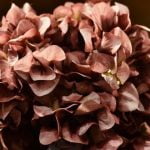Are you looking for creative ideas for triangular gardens? Triangular gardens offer a unique and challenging space to work with, but with the right design and plant selection, they can become stunning outdoor areas.
In this article, we will explore the beauty and potential of triangular gardens, providing tips and tricks for maximizing space, selecting the best plants, creating focal points, utilizing vertical space, designing functional pathways, incorporating seating areas, and maintaining your garden to keep it looking its best all year round.
Whether you have a small triangular plot or are simply looking for inspiration for your garden design, this article will provide you with valuable insights and innovative ideas to create a beautiful and functional triangular garden.
When it comes to designing a triangular garden, there are specific considerations to maximize both the visual appeal and functionality of the space. From plant selection to creating focal points and utilizing vertical space, there are numerous opportunities to make the most of this unique shape.
We will also discuss how to create cozy seating areas within your triangular garden so that you can relax and enjoy the space. Ultimately, our goal is to inspire readers to recognize the potential of triangular gardens and empower them to transform their outdoor spaces into beautiful and unique retreats.
Designing a Triangular Garden
To maximize space in a triangular garden, it’s important to carefully plan and layout the different elements of your design. One effective strategy is to create distinct zones within the garden, each serving a specific purpose. For example, you might designate one area for dining or entertaining, another for growing vegetables or flowers, and another for a water feature or sculpture.
In addition to zoning, using diagonal lines in your design can help visually expand the space and create interest. By positioning plants, pathways, and other features along diagonal lines rather than just following the straight edges of the triangle, you can create a sense of movement and flow throughout the garden.
This can also help draw the eye towards different focal points within the space. When selecting hardscaping materials such as pavers or decking for pathways and seating areas, consider using irregular shapes and patterns to complement the angular nature of the garden.
When it comes to plant selection for triangular gardens, consider using a mix of tall, medium-height, and low-growing plants to add depth and dimension to the space. Incorporating vertical elements such as trellises or arbors can also help maximize vertical space while adding visual interest.
Additionally, choosing plants with varying textures, colors, and seasonal interests can enhance the overall visual appeal of your triangular garden. By carefully considering these design elements and incorporating them into your landscape plan, you can create a stunning and functional outdoor space that makes full use of its unique shape.
Plant Selection for Triangular Gardens
When it comes to designing a triangular garden, one of the most important considerations is choosing the right plants to complement the unique shape. The triangular layout offers a chance to get creative with plant selection and create a visually appealing landscape. Here are some tips for selecting plants for your triangular garden:
- Consider the height and spread of plants: In a triangular garden, it’s essential to choose plants that won’t overwhelm the space or obstruct sightlines. Opt for plants with varying heights and spreads to add dimension and visual interest.
- Choose a variety of textures and colors: Incorporating plants with different leaf shapes, sizes, and colors can help break up the space and create visual appeal. Mix in foliage, flowers, and even ornamental grasses to add diversity to your garden.
- Think about seasonal interest: Selecting a mix of plants that bloom or change foliage throughout the year can ensure that your triangular garden remains vibrant and appealing regardless of the season. Research which plants thrive in your climate and plan accordingly.
By keeping these considerations in mind, you can create a well-balanced and visually stunning triangular garden that maximizes the unique shape of the space.
In addition, another aspect to consider when choosing plants for a triangular garden is ensuring that they complement each other aesthetically while also being well-suited for the specific conditions of the site. Some ideas for triangular gardens include:
- Grouping together low-growing ground covers or compact shrubs near the apex of the triangle to create a focal point without obstructing sightlines.
- Utilizing climbing vines along fences or trellises to take advantage of vertical space without encroaching on limited ground area.
- Incorporating dwarf trees or columnar shrubs along one side of the triangle to add height without overwhelming the space.
With careful planning and consideration, you can select plants that not only complement the unique shape of your triangular garden but also thrive in its environment, creating a beautiful and harmonious outdoor space.
Creating Focal Points
One of the key elements in designing a triangular garden is creating focal points that draw the eye and add visual interest. Since triangular gardens often have irregular shapes, it’s important to strategically place focal points to balance the overall look and feel of the space. One effective way to achieve this is by using height variations and different textures to create a sense of depth within the garden.
One creative idea for a focal point in a triangular garden is to install a vertical feature, such as a trellis or an arbor, at one of the corners. This not only adds height but also introduces an element of vertical interest that can break up the sharp angles of the space. Additionally, incorporating colorful and unique plantings around this vertical feature can further enhance its appeal and make it stand out as a focal point.
Another way to draw attention to specific areas within a triangular garden is by using pathways or stepping stones that lead to different sections. By strategically placing these pathways, you can guide visitors through the space while also highlighting specific plantings or decorative elements along the way. This creates a sense of discovery and encourages exploration, making the garden feel more dynamic and engaging.
Finally, adding an eye-catching sculpture, fountain, or seating area at the center or apex of the triangle can serve as a striking focal point. This draws attention to this central area and creates a sense of harmony within the overall design. By incorporating these ideas for triangular gardens, you can create visually captivating spaces that showcase both creativity and functionality.
| Ideas for Focal Points in Triangular Gardens | Benefits |
|---|---|
| Vertical features such as trellises or arbors placed at corners | Adds height, introduces visual interest |
| Strategically placed pathways or stepping stones leading to different sections | Guides visitors through space, highlights specific plantings |
| Incorporating sculptures, fountains, or seating areas at central area/apex | Create visual centerpiece, adds harmony within design |
Utilizing Vertical Space
When working with a triangular garden, one of the key considerations is how to make the most of limited ground area. Utilizing vertical space can be a creative and practical solution to this challenge, allowing for additional planting areas and adding visual interest to the garden. Here are some innovative ways to maximize vertical space in your triangular garden.
Vertical Planters
One of the most effective ways to make use of vertical space is through the use of vertical planters. These can be freestanding structures or wall-mounted containers that allow you to plant a variety of flowers, herbs, or vegetables without taking up valuable ground space. Vertical planters not only add greenery to your garden but can also serve as striking focal points, especially when planted with cascading or trailing plants.
Trellises and Arbors
Trellises and arbors are versatile structures that can be used to create vertical interest in a triangular garden. They offer support for climbing plants such as roses, jasmine, or clematis, adding height and structure to the space. By training these plants to climb upwards, you can draw the eye upwards and create a sense of depth in your garden.
Hanging Gardens
Another way to utilize vertical space is through the use of hanging gardens. Hanging baskets or suspended planters can be used to display a variety of plants, from colorful flowers to aromatic herbs. Hang them from trees, pergolas, or other structures within your triangular garden to add an unexpected element and introduce more greenery without encroaching on precious ground space.
By incorporating these innovative ideas for utilizing vertical space into your design, you can make the most of a triangular garden’s limited ground area while creating a visually stunning and functional outdoor space.
Pathways and Walkways
When designing a triangular garden, the pathways and walkways play a crucial role in enhancing both the functionality and aesthetics of the space. With limited ground area to work with, it’s important to carefully plan out the layout of pathways to ensure they not only serve their practical purpose but also contribute to the overall visual appeal of the garden.
Curved Pathways
One way to maximize space and create an interesting flow within a triangular garden is to utilize curved pathways. Curved pathways can add a sense of movement and natural flow to the garden, leading visitors through different areas while making efficient use of space. By incorporating gentle curves and meandering paths, you can create a sense of discovery and exploration within the confined space of a triangular garden.
Materials and Textures
The choice of materials for your pathways can greatly impact the overall look of your triangular garden. Opting for materials that complement the surrounding plants and design elements is essential. Whether you prefer natural stone for a rustic feel, gravel for a more casual look, or bricks for a formal aesthetic, selecting the right materials will help tie together the different elements within your garden.
Lighting
Incorporating lighting along your pathways not only adds an element of safety and functionality but also contributes to the ambiance of your triangular garden. Consider low-voltage lighting embedded along the edges of your pathways or discreetly placed solar-powered lights for subtle illumination during evening hours. Lighting can dramatically enhance the visual appeal of your garden while ensuring that walkways are well-lit and safe to navigate.
By carefully considering the design, materials, textures, and lighting when planning out pathways in a triangular garden, you can create functional yet aesthetically pleasing walkways that enhance the overall beauty and usability of your outdoor space.
Incorporating Seating Areas
When it comes to incorporating seating areas in triangular gardens, there are plenty of creative and functional options to consider. Despite the unique shape of triangular gardens, it is still possible to create cozy spots where you can relax and enjoy the space. One idea is to use curved or rounded seating arrangements that can fit neatly into the corners of the garden, making the most of the available space while providing a comfortable area for lounging or entertaining.
Another idea for incorporating seating areas in triangular gardens is to utilize built-in benches or seating that can be integrated into the design of raised beds or planters. This not only maximizes space but also adds a touch of sophistication to the overall look of the garden.
Additionally, considering portable seating options such as foldable chairs or outdoor bean bags can provide flexibility for rearranging seating areas depending on how you want to use your garden at any given time.
In terms of materials, choosing weather-resistant furniture and fabrics is essential for ensuring that your seating areas remain durable and low-maintenance. Selecting pieces that complement the surrounding plants and landscaping will help create a cohesive and inviting atmosphere in your triangular garden.
| Ideas | Benefits |
|---|---|
| Curved seating arrangements | Maximizes space, provides comfortable area for lounging or entertaining |
| Built-in benches or seating integrated into raised beds/planters | Maximizes space, adds sophistication to garden design |
| Portable seating options (i.e. foldable chairs, outdoor bean bags) | Provides flexibility for rearranging seating areas based on garden usage |
Maintenance Tips for Triangular Gardens
Maintaining a triangular garden can be a rewarding experience, but it also requires some special care to keep it looking its best throughout the year. One of the key maintenance tips for triangular gardens is to regularly trim and shape the plants to maintain a neat and tidy appearance. With the unique shape of triangular gardens, this can be especially important to prevent overgrowth from making the space feel cluttered.
In addition to regular pruning, it’s essential to stay on top of weeding in a triangular garden. The limited space means that weeds can quickly take over and detract from the overall look of the garden. Implementing a regular schedule for weeding can help maintain a clean and manicured appearance.
Another important maintenance tip for triangular gardens is to fertilize and water regularly. Due to the limited ground area, plants in triangular gardens may need extra nutrients and moisture to thrive. Using a balanced fertilizer and implementing an efficient watering system can help keep your plants healthy and vibrant.
By following these maintenance tips, you can ensure that your triangular garden remains an eye-catching and inviting outdoor space all year round. From regular pruning and weeding to proper fertilization and watering, taking care of your garden will allow you to fully enjoy its unique beauty.
Conclusion
In conclusion, the unique shape of triangular gardens offers endless opportunities for creativity and innovation. From maximizing space with clever designs to creating focal points and utilizing vertical space, there are countless ways to make the most of these unconventional outdoor spaces. By carefully selecting plants, designing functional pathways, and incorporating cozy seating areas, a triangular garden can become a truly special oasis.
As we have explored in this article, there are many ideas for triangular gardens that can inspire individuals to transform their outdoor spaces into beautiful and functional areas. The key lies in embracing the shape of the garden and working with it to create a harmonious and visually appealing environment. With the right design principles and maintenance techniques, triangular gardens can become a standout feature of any home.
We encourage our readers to take the ideas presented here as a starting point for their own triangular garden designs. Whether you have a small corner or an entire yard in this shape, there is great potential waiting to be unlocked. By incorporating elements such as plant selection, pathways, seating areas, and thoughtful design touches, you can bring out the full beauty of a triangular garden and enjoy your own unique outdoor haven for years to come.
Frequently Asked Questions
What Can You Do With a Triangle Shaped Garden?
A triangle-shaped garden offers a unique opportunity for creative landscaping. You can use the angles and shape to create interesting pathways, plant different sections with various flowers or shrubs, or even install a small fountain or seating area.
How Do You Landscape a Triangular Yard?
Landscaping a triangular yard requires careful planning to make the most of the space. You can consider using tiered planters to maximize planting areas, creating a focal point at the narrow end, and incorporating curved lines to soften the sharp angles.
What Is a Triangular Garden?
A triangular garden is a garden plot that is shaped like a triangle. It can be found in urban spaces where land is limited or as an intentional design choice for those looking for a more unconventional garden shape.

Welcome to my gardening blog! I am passionate about plants and enjoy sharing my knowledge and experiences with others. In this blog, I will write about everything related to gardening, from tips on how to get started to updates on my own garden projects.





